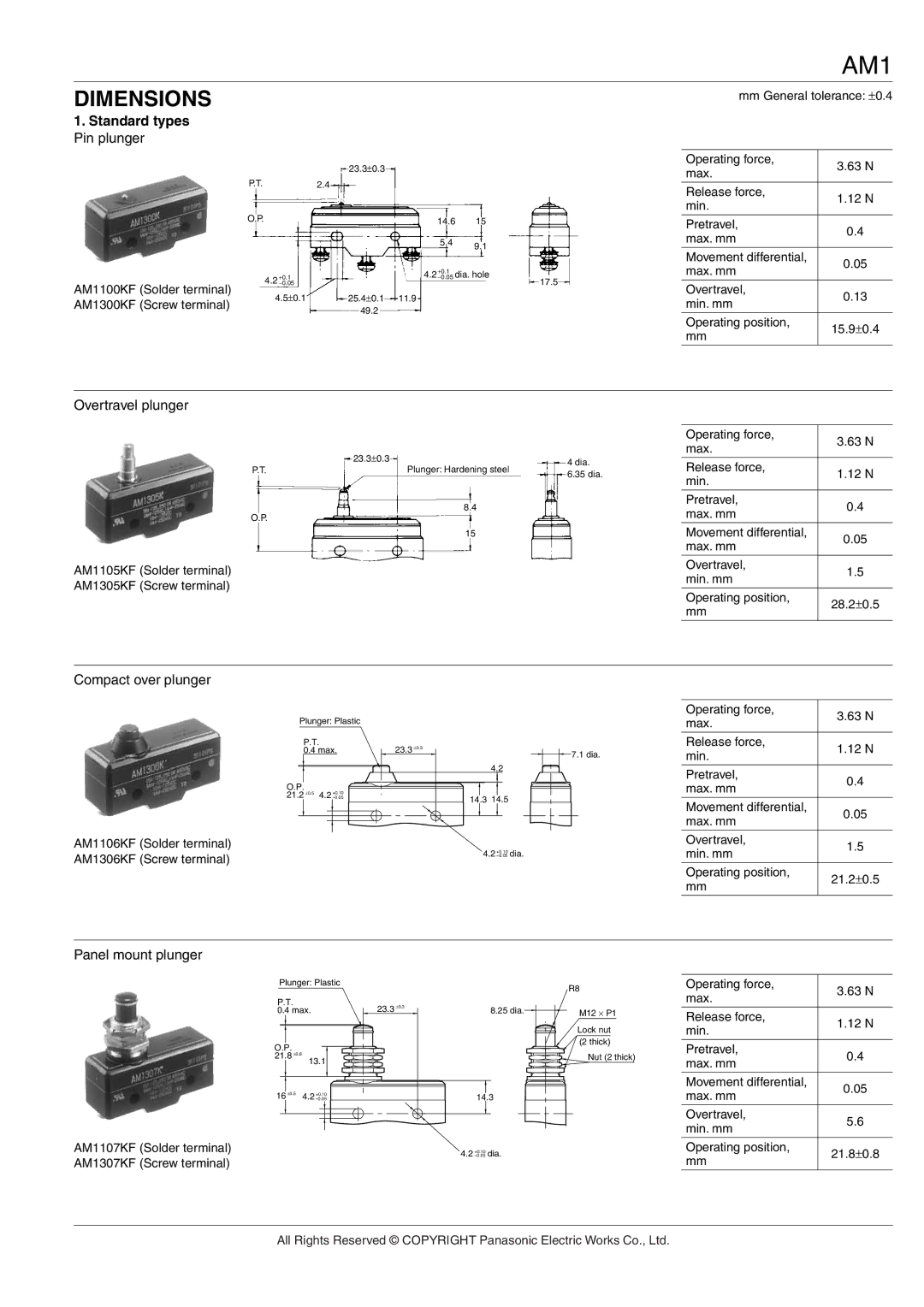AM1 (NZ BASIC) specifications
The Panasonic AM1, also known as NZ BASIC, is a versatile and innovative personal computer that was introduced in the early 1980s. This machine represents an era of computing when home and office technology began to merge, making it accessible for everyday users and enthusiasts alike.One of the standout features of the Panasonic AM1 is its compact design, which makes it suitable for various workspaces. The AM1 was built to be user-friendly, featuring a straightforward keyboard and a clear display that catered to both beginners and experienced users. The inclusion of a floppy disk drive allowed users to save and transfer data easily, bridging the gap between portable use and desktop computing.
Under the hood, the AM1 is powered by an Intel 8088 processor, which operates at a clock speed of 4.77 MHz. This processor was a step forward at the time, facilitating the execution of more complex tasks and supporting a variety of applications. The AM1's architecture enabled it to support 16-bit computing, which enriched its capabilities and provided a more efficient means of data processing compared to its predecessors in the personal computer market.
The operating system of the Panasonic AM1 was its own customized version of BASIC, which provided users a familiar programming environment. This integration allowed users to create simple programs and scripts, making it a popular machine in educational settings. The emphasis on BASIC programming also attracted a generation of hobbyists who enjoyed writing their software.
Connectivity was another key aspect of the AM1. It featured multiple ports for peripherals, including printers, modems, and external drives. This flexibility allowed users to expand their system capabilities and customize their computing experience.
In terms of memory, the Panasonic AM1 initially offered modest RAM options, but it could be upgraded to meet the increasing demands of software and applications as they evolved. This upgradability extended the life of the machine, making it a worthy investment for users looking to keep pace with technological advancements.
Overall, the Panasonic AM1 (NZ BASIC) represents a significant milestone in personal computing history. Its blend of user-friendly design, innovative technology, and programming capabilities made it an appealing choice for both novices and professional users in the early days of computing. With its classic architecture and practical features, the AM1 remains a cherished piece of technology for collectors and enthusiasts alike.

